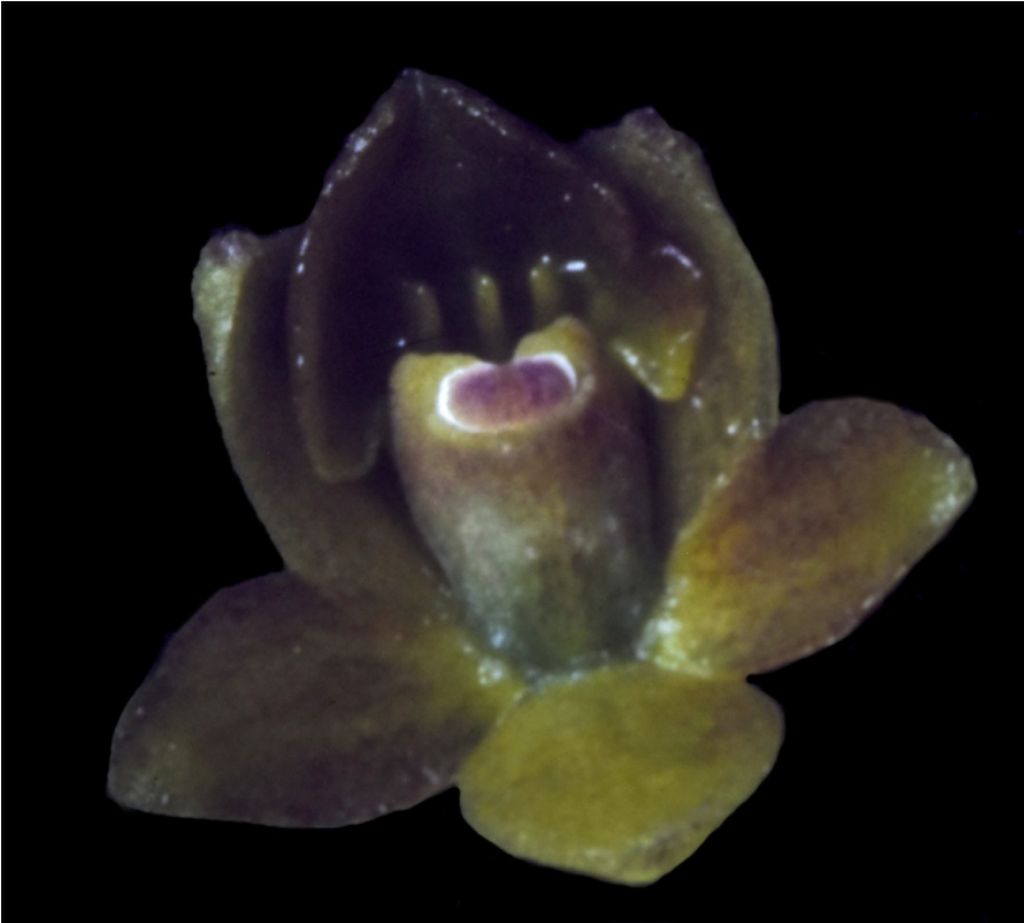

Epidendrum trapezilabiatum Hagsater & Santiago 2020 GROUP Diothonea SUBGROUP Diothonea
Photo by Alexander Hirtz/TYPE Drawing by © R Jimenez M and Icones Orchidacearum 18(1) plate 1841 2020



Common Name The Trapezoid Lip Epidendrum [refers to the shape of the lip a square with to unequl lengthsides and 2 the other two not parellel]
Flower Size 3.8" [9.5 cm]
Found in Tungurahua province of central Ecuador near the summit of the eastern slope of the Andes at elevations around 3000 meters as a monopodial, scandent, medium sized, cold growing epiphyte with simple, cane-like, produced from the sub-apical internodes of the previous stems, thin, straight stems with the base covered by tubular, non-foliar sheaths and carrying 3 to 4, towards the apex of the stem, alternae, articulate, sub-coriaceous, lanceolate, rounded, unequally bilobed, apiculate, margin entire leaves that blooms in the winter on a terminal, without a spathe, apical, peduncle .08" [2 mm] long, terete, thin, very short; rachis .32" [8 mm] long, nearly totally hidden by the floral bracts, arching-nutant, .4" [1 cm] long overall, simultaneously 7 to 10 flowered inflorescence with narrowly triangular, acuminate, embracing, sdhorter than the ovary floral bracts and carrying non-resupinate flowers.
"Epidendrum trapezilabiatum belongs to the GROUP Diothonea SUBGROUP Diothonea which is characterized by the branching plants, linear lanceolate to oblong, bilobed leaves, the racemose, arching-nutant inflorescence, the membranaceous flowers (rarely fleshy), the entire to 3-lobed, ecallose lip with the margin erose without or with 1 to 10 thin, smooth to erose keels, the column completely to obliquely united to the lip, and the anther reniform. The new species is recognized by the short inflorescences with up to 10, orange-brown, small, non-resupinate flowers, the sepals .176 to .208" [4.4-5.2 mm] long, unornamented, the lateral sepals connate at base, petals .16 to .168 x .08 to .088" [4.0 to 4.2 x 2.0 to 2.2 mm], ovate, margin entire, and the lip trapezoid, truncate at base and apex, disc with 3 parallel, free, laminar ribs. Epidendrum podocarpophilum has pale orange, resupinate flowers, the sepals dorsally papillose, free, the petals obovate-spatulate with the margin dentate, and the lip 3-lobed, the base cordate, apex emarginate, disc with 3 fleshy ribs fused at the base. Epidendrum lophotropis Hágsater & Dodson also has orange, resupinate flowers, but the lateral sepals are free, dorsally sub-papillose, the petals .22 x .12" [5.5 x 3 mm], ovate-rhombic, with the margin erose-dentate, the lip united only along the basal half of the column, 3-lobed, base cordate, apex emarginate, with 7 crested ribs, and a prominent clinandrium-hood. Epidendrum pseudoglobiflorum Hágsater & Dodson has up to 20 orange or vermillion red, resupinate flowers, sepals .256 to .28" [6.4 to 7 mm] long, the lateral sepals connate at base making the flowers trumpet shaped, and the lip widely sub-orbicular-hexagonal with the margin dentate, apex slightly bi-lobed, the disc with 7 prominent ribs.." Hagsater & Cisneros 2020
Synonyms
References W3 Tropicos, Kew Monocot list , IPNI ; * Icones Orchidacearum 18(1) plate 1841 Hagsater & Santiago 2020 TYPE Drawing/photo fide;
--------------------------------------------------------------------------------------------------------------------------